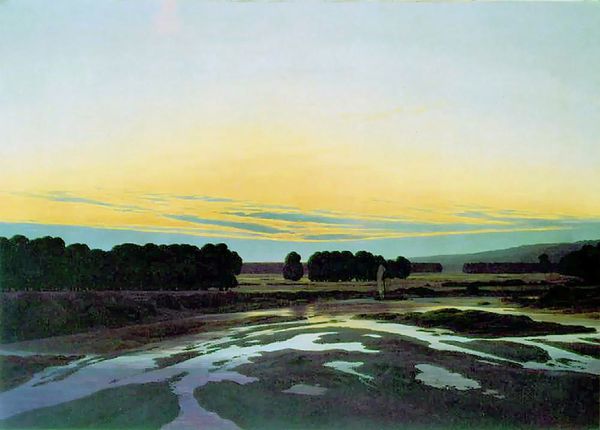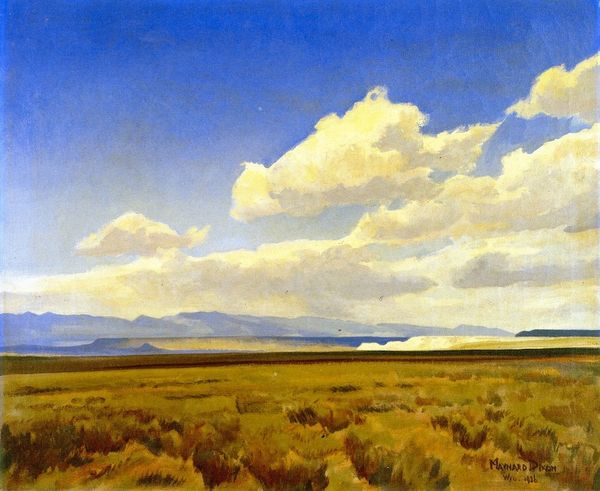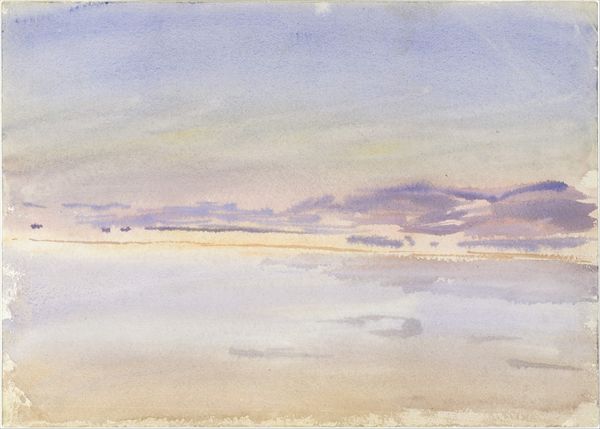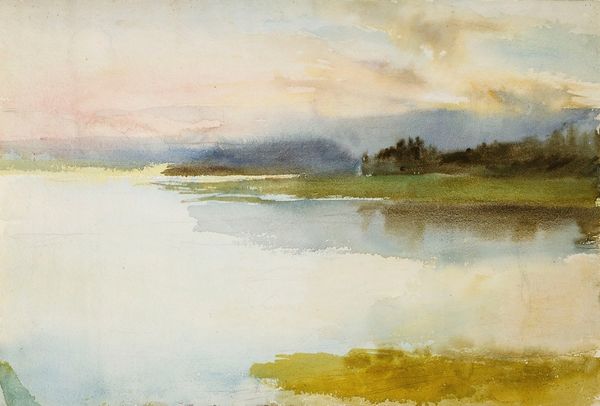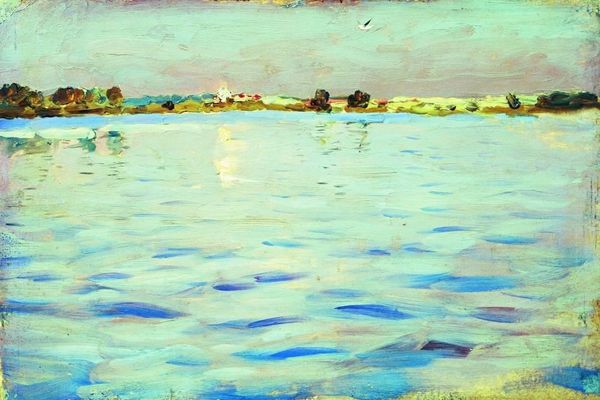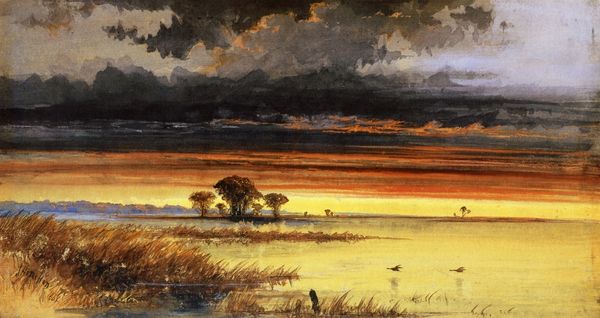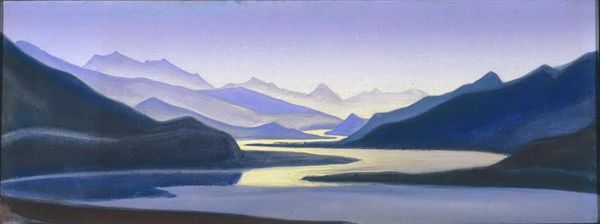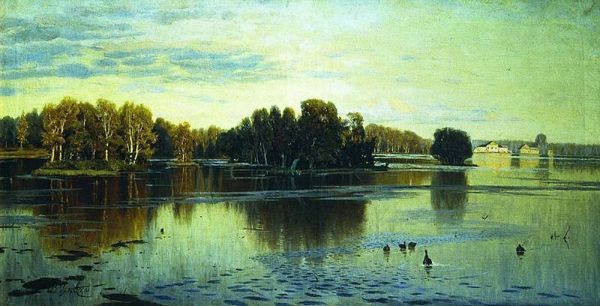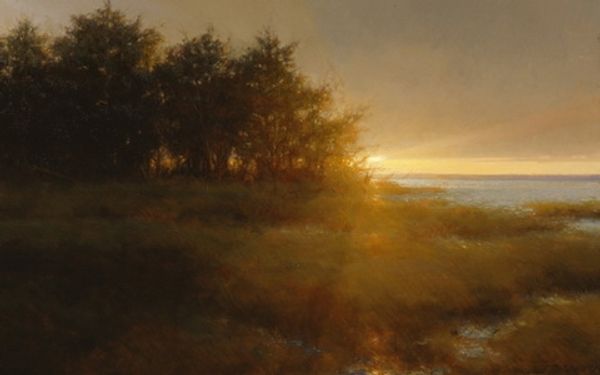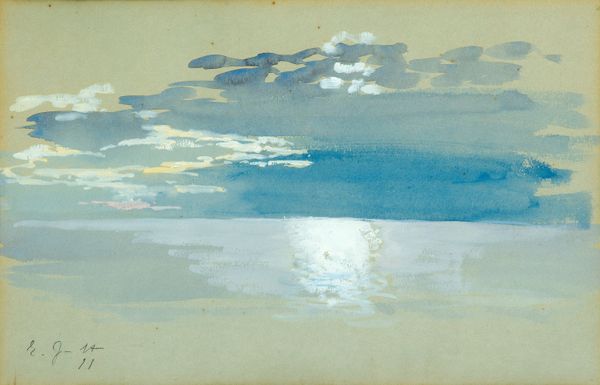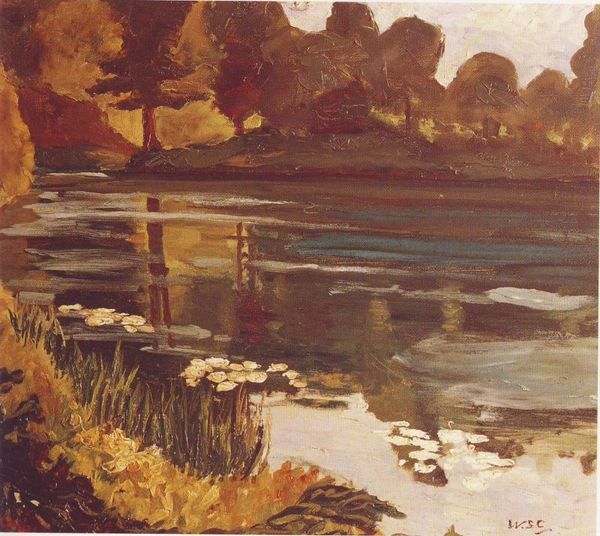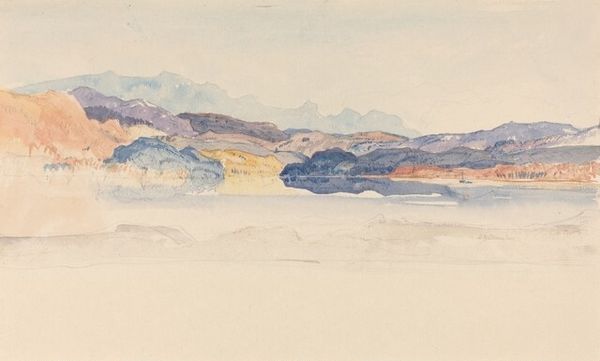
painting, plein-air, oil-paint
#
impressionism
#
abstract expressionism
#
sky
#
painting
#
impressionism
#
impressionist painting style
#
plein-air
#
oil-paint
#
landscape
#
romanticism
#
natural-landscape
#
water
#
nature
Copyright: Public domain
Curator: This is J\u00f3zef Mehoffer's "The Wisla River, near Niepolomice," an oil painting capturing a serene waterside moment. Editor: The texture! You can almost feel the damp earth underfoot. There’s a real sense of the materiality of paint here; thick strokes capture the reflection on the water, while the foreground seems deliberately rougher. Curator: Mehoffer was deeply involved with Polish cultural identity at the turn of the century. He saw landscape painting as a tool to promote national pride, emphasizing the beauty of the Polish countryside. Editor: That makes sense, because the scale and drama of this painting evoke a certain grandness, a monumentality even, though the subject is ostensibly quite simple. Is that horizon sunset gold or pollutant? What paints were available, and who were they made for? Curator: While that's an interesting consideration, I think we have to contextualize this within the wider Romantic tradition and its connection to emerging national sentiments. The composition pulls the eye into a space imbued with quiet reflection on Poland’s natural bounty, yet at the same time it promotes values regarding that land. Editor: Still, understanding the specific pigments, their sourcing and production at that time, tells us much more than the airy-fairy narratives that art institutions too easily weave in a modern setting! Curator: Well, even understanding who bought these landscapes, how they were displayed and consumed tells us a great deal about social values regarding beauty, ownership, and representation in turn of the century Poland. It brings forward the reality that the art system influences subject and context both. Editor: That's fine, so long as that the means of production for artworks are understood as an economic element that influences these decisions. It can bring fresh perspective and revalue accepted norms when engaging with art. Curator: I agree, these multiple angles gives viewers space to analyze on multiple fronts and create discussions like these which promote thoughtful exchanges for all! Editor: Absolutely, so each viewer gains new perspectives while investigating paintings such as this one, including what materialist values and nationalistic history may lie in them.
Comments
No comments
Be the first to comment and join the conversation on the ultimate creative platform.
